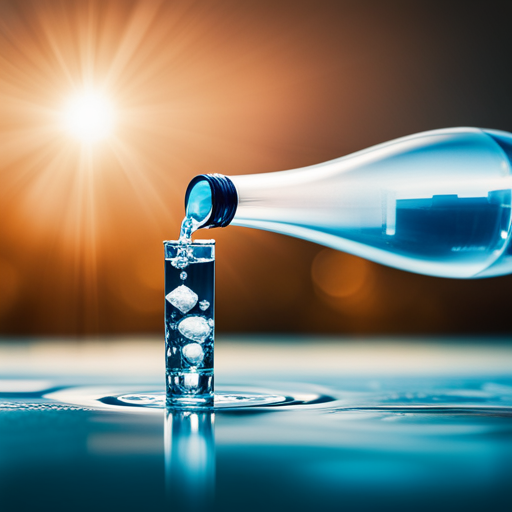Are you concerned about the quality of your drinking water? Copper is a common contaminant that can cause health issues if present in excessive levels.
Fortunately, reverse osmosis (RO) systems are a widely used method for removing a range of contaminants, including copper, from drinking water. In this article, you will learn how reverse osmosis can effectively remove copper from your water, providing clean and safe water for you and your family.
Under-sink RO filters are a popular choice for homeowners who want to remove copper and other contaminants from their drinking water. These filters can remove more than 95% of copper, while high-quality filters can remove 99% or more.
Choosing the right RO system depends on factors such as budget, home size, and water quality, and NSF certification ensures quality and safety.
By the end of this article, you will have a better understanding of how reverse osmosis can help you say goodbye to copper and enjoy clean and safe drinking water in your home.
Key Takeaways
– Copper can be harmful in high doses and can enter drinking water through various sources.
– Reverse osmosis systems can effectively remove copper from drinking water, with high-quality filters removing 99% or more.
– Choosing the right RO system depends on factors such as budget, home size, and water quality, and NSF certification ensures quality and safety.
– EPA has set standards for copper levels in drinking water, with the Maximum Contaminant Level Goal (MCLG) for copper being 1.3 mg/L.
Copper in Drinking Water
If you’re concerned about the harmful effects of copper in your drinking water, you’ll be glad to know that reverse osmosis systems can effectively remove it.
Copper can be harmful if consumed in high doses and can enter drinking water through various sources. Excessive levels of copper can cause health issues, especially in infants and toddlers. That’s why the EPA has set a Maximum Contaminant Level Goal (MCLG) for copper in drinking water at 1.3 mg/L (or ppm).
To ensure the safety of your drinking water, consider investing in a high-quality reverse osmosis system. These systems can remove up to 99% of copper from your water, along with a wide range of other contaminants. By choosing a system that’s NSF certified, you can be sure that it meets rigorous standards for materials, mechanical integrity, and contaminant reduction.
Don’t take chances with your health or the health of your family – say goodbye to copper in your drinking water with reverse osmosis.
Reverse Osmosis Treatment
To effectively remove contaminants from your drinking water, consider choosing a reverse osmosis system that has a high-quality membrane and post-filter. Reverse osmosis (RO) treatment can remove more than 95% of copper from your water, and high-quality RO filters can remove 99% or more.
When choosing an RO system, it’s important to consider its maintenance requirements. RO filters have sediment filters and activated carbon filters that need to be replaced regularly. You should also look at the RO membrane efficiency, which is measured in gallons per day.
For larger families or high water usage, a larger RO filter may be necessary. By choosing the right RO system and keeping up with its maintenance, you can enjoy clean and safe drinking water without worrying about harmful contaminants like copper.
Choosing the Right RO System
When selecting an RO system, you should consider factors such as your budget, home size, and the quality of your water. If you have a larger family or use a lot of water, you’ll need an RO system with a larger filter that can process more gallons of water per day.
RO systems come in various sizes, so you can choose the one that best suits your needs. Additionally, it’s important to look for an RO system with NSF certification.
The NSF/ANSI 58 standard is specifically for point-of-use RO systems and ensures that the system meets quality and safety criteria for materials, mechanical integrity, and contaminant reduction. By choosing an NSF-certified RO system and sizing it correctly, you can ensure that you have clean, safe drinking water for your family.
Conclusion
So there you have it – reverse osmosis is a highly effective method for removing copper and other contaminants from drinking water. By choosing the right RO system for your budget, home size, and water quality, you can ensure that your household is drinking clean and safe water.
It’s important to note that NSF certification is a key factor in ensuring the quality and safety of your RO system. Don’t take any chances with your health – invest in a high-quality RO system and enjoy the peace of mind that comes with knowing your drinking water is free from harmful contaminants.
Say goodbye to copper and hello to clean, refreshing water!
